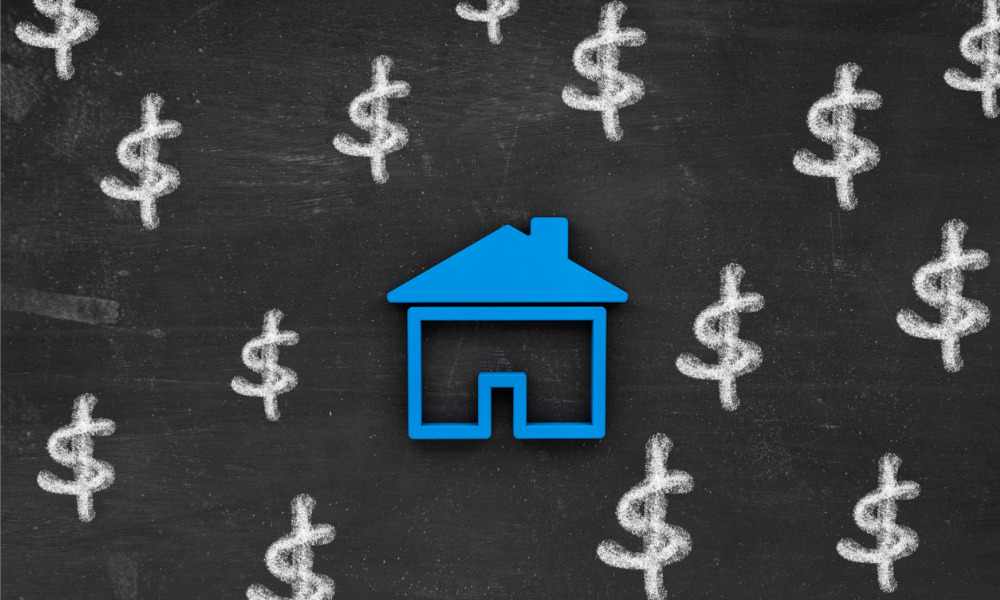Almost every factor driving price gains has "lost some potency" in recent months, expert says

Australian home values rose 1.3% in November, marking the 14th consecutive month of positive value growth, according to new data from CoreLogic.
The November rise brings housing values 22.2% higher over the past 12 months and adds about $126,700 to the median value of an Australian home.
However, the November rise was the smallest gain since January, when values rose 0.9%, CoreLogic reported. Since hitting a peak in March, when home values rose 2.8%, there has been a trend toward softer price growth.
Tim Lawless, CoreLogic research director, said there were a number of reasons for the slowdown.
“Virtually every factor that has driven housing values higher has lost some potency over recent months,” Lawless said. “Fixed mortgage rates are rising, higher listings are taking some urgency away from buyers, affordability has become a more substantial barrier to entry, and credit is less available.”
Among capital cities, Brisbane and Adelaide posted the fastest pace of growth, while Sydney and Melbourne slowed sharply, CoreLogic reported.
Brisbane and Adelaide are the only capital cities that have not yet experienced a slowdown, with the monthly rate of growth hitting a new cyclical high in both cities in November. Brisbane home values rose 2.5% last month (the highest since October 2003), while Adelaide values rose 2.5% (the highest since February 1993). In dollar terms, that equates to a monthly rise of about $18,500 for Brisbane and $13,500 for Adelaide, based on median values.
“Relative to the larger cities, housing affordability is less pressing, there have been fewer disruptions from COVID lockdowns and a positive rate of interstate migration is fueling housing demand,” Lawless said. “On the other hand, Sydney and Melbourne have seen demand more heavily impacted from affordability pressures and negative migration from both an interstate and overseas perspective.”
Read next: Property prices are clients’ biggest concern – brokers
Differing supply is also creating divergent trends among the capitals, CoreLogic reported. In the four-week period to Nov. 28, total stock available for sale in Adelaide was 32% lower than the five-year average. In Brisbane, it was 33.9% lower. Across Sydney and Melbourne, however, stock levels have become more normalised in recent weeks. In Sydney, total listings sat only 2.6% below the five-year average, while Melbourne stock levels were 7.9% below the average.
Houses continued to outperform units, with capital city values up 1.2% for houses and 0.7% for units in November. However, the quarterly rate of growth is the narrowest it has been since October 2020, with only 1.6 percentage points between the housing types, CoreLogic reported.
Based on median values, capital city houses are now 37.9% more expensive than capital city units – the largest difference on record. In dollar-value terms, a capital city house averages about $240,500 more than a capital city unit. The gap is widest in Sydney, where a house costs $523,000 more on average than a unit.
“With such a large value gap between the broad housing types, it’s no wonder we are seeing demand gradually transition towards higher-density housing options simply because they are substantially more affordable than buying a house,” Lawless said.
The slowdown isn’t as obvious in regional areas, where the monthly pace of capital gains has accelerated over the past three months, CoreLogic reported. Across the combined “rest-of-state” regions of Australia, housing values rose 2.2% last month, double the monthly rate posted by the combined capital cities. Regional Tasmania (2.5% over the month and 29.8% year over year) and regional New South Wales (2.4% over the month and 29.1% year over year) saw the largest growth.
The strongest growth trends in regional Australia remained skewed towards coastal and lifestyle markets, with NSW’s Southern Highlands and Shoalhaven posting the highest quarterly growth rate at 9.7%, followed by the Hunter Valley (excluding Newcastle) at 8.9% and Tasmania’s Launceston and North East region at 7.7%.
Demand for housing in regional markets – especially those within commuting distance of the major cities – is continuing to benefit from the spike in remote work, as well as renewed demand for coastal and lifestyle properties and more affordable housing, CoreLogic reported.



